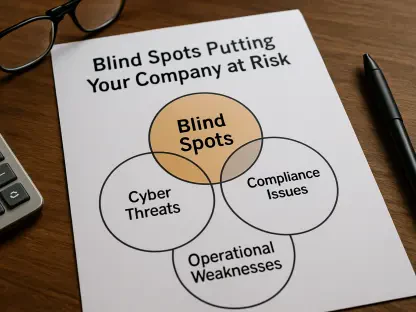A quiet shift is racing through software supply chains as enterprises discover that most container images ship with far more code—and far more risk—than applications actually need, and that a smaller, verified base often outperforms patch-chasing at both speed and cost. This analysis examines why minimal, security‑focused “hardened” images are overtaking convenience‑first bases, how vendor catalogs and managed pipelines are maturing, and what the next three years likely hold for buyers, builders, and regulators vested in safer production systems.
Market Context And Purpose
Containers became the delivery format of choice because they felt effortless: start with a full distribution, add packages until things run, push to production. That workflow created sprawling dependency trees and embedded hundreds of known vulnerabilities, not through negligence but through inherited complexity. As procurement scrutiny and regulatory mandates tightened, the cost of that complexity turned visible in audits, incident response, and delayed releases.
The market is now consolidating around a different foundation. Hardened images strip out nonessential packages, align bases to specific runtimes, and ship with signed artifacts and verifiable SBOMs. This report frames the business case, quantifies impact, and highlights adoption hurdles, giving security, platform, and product leaders a shared view of how to standardize on safer images without slowing delivery.
Demand Drivers, Data Signals, And Economic Stakes
Defect density numbers are stark. Analyses of popular Debian‑based images showed averages near 280 vulnerabilities per image, while another study of 70 images measured roughly 604 on average. Most issues arrive transitively through system packages that the application never uses. The result is a noisy backlog, higher compliance burden, and a patch treadmill that drains engineering cycles.
Hardened images change the arithmetic. Providers report vulnerability reductions of 97 percent or better, often approaching near‑zero known CVEs for common runtimes. Clean, minimal bases also shrink image size—often by 60–80 percent—reducing attack surface and speeding builds, scans, and deployments. For regulated buyers, signed images, traceable SBOMs, and alignment with frameworks like FIPS compress audit prep and reduce exceptions.
Economically, the model shifts spending from reactive patch management to proactive base control. Fewer components mean fewer vulnerabilities and a smaller surface to monitor. When paired with automated rebuild‑and‑redeploy pipelines, organizations can cut mean time to remediate while lowering the volume of manual triage across teams.
Vendor Landscape And Managed Models
Catalog breadth reached critical mass. Docker Hardened Images span more than 1,600 images across over 240 projects, covering staples like Python, PostgreSQL, Redis, and Tomcat. Chainguard covers more than 1,800 projects. CleanStart maintains 350‑plus projects with a plan to reach 1,000 this year. These catalogs bring predictable, versioned updates, signed artifacts, and consistent provenance, meeting rising enterprise and public‑sector requirements.
The delivery model is shifting as well. Providers monitor CVE feeds, patch, rebuild, re‑sign, and publish updates continuously. Some customers now reduce parts of internal CI for base image maintenance, leaning on vendor pipelines for patch ingestion and verification. The upside is faster uptake with less toil. The trade‑off is stronger dependence on vendor provenance services and update cadences, making supplier diligence and redundancy more important.
Competitive differentiation is moving beyond “minimal” into guarantees: reproducible builds, granular SBOMs, attestation depth, and hardening profiles for distinct risk tiers. Pricing is aligning with managed lifecycle value, not just artifact access, and buyers are benchmarking vendors on both catalog coverage and patch latency.
Adoption Barriers And Operational Dynamics
Security gains bring new workflows. Minimal images often drop shells, package managers, and debugging tools. Teams adapt by using multi‑stage builds, ephemeral debugging sidecars, or remote tooling. This change is manageable, but it requires clear developer guidance and prebuilt devcontainer templates to avoid friction.
The larger constraint is propagation. Many organizations excel at CI but lag at continuous deployment. If downstream images are not rebuilt and redeployed quickly, upstream patches linger unused. Treating hardened bases as living supply chain inputs requires policy‑driven rebuilds, signature and SBOM verification, security gates, and progressive delivery in production. Without that discipline, “near‑zero CVEs” at the source decays into familiar backlog downstream.
Governance must keep pace. Artifact stores need to capture attestations and provenance, while change management consumes machine‑readable evidence. Metrics that matter include patch latency from upstream release to production, vulnerability counts by severity, and coverage of signed, verified artifacts across environments.
Forecast, Scenarios, And Market Trajectory
From 2025 to 2027, minimalism is set to become the baseline for production images as distribution‑like bases recede to niche use. Verification will be table stakes, with signed artifacts, SBOMs, and attestations becoming procurement defaults in both private and public sectors. Managed lifecycle services will expand, with vendors offering SLAs on patch turnarounds and provenance depth, while marketplaces bundle hardened images with policy engines and enforcement.
Two scenarios stand out. In the optimistic case, enterprises wire automated rebuild‑and‑redeploy loops across portfolios, achieving sub‑week patch latency for critical fixes and measurable defect density reductions. In the slower case, adoption concentrates in high‑risk systems, and benefits remain uneven due to bottlenecks in testing and release controls. In both paths, AI‑augmented development increases service count and change rates, making standardized, verifiable bases the pragmatic constraint on risk.
Pricing pressures will likely favor tiered subscriptions: broad catalogs for mainstream stacks, premium tiers for compliance‑bound workloads with deeper attestations, and add‑ons for custom hardening. Vendors that pair coverage with credible provenance—and integrate cleanly into platform engineering toolchains—will capture share.
Strategic Playbook For Buyers
Enterprises benefit from setting “hardened by default” as policy for new services and prioritizing migrations for internet‑facing and regulated workloads. Multi‑stage builds should separate build and runtime needs, leaving runtime images lean and compliant. Pipelines need automated triggers for upstream changes, signature and SBOM checks, security tests, and progressive rollouts with fast rollback paths.
Platform teams should standardize developer ergonomics early: vetted base devcontainers, patterns for ephemeral debugging, and documentation for slim images. Governance functions can require attestations at promotion gates and record evidence in artifact repositories. Success is best measured with leading indicators—patch latency and verified coverage—rather than trailing counts alone.
Closing Perspective
The market had moved from convenience‑first images with sprawling CVE noise to hardened, verifiable bases that compressed risk and effort. Vendors had delivered broad catalogs and credible managed updates, while buyers that invested in automated propagation saw outsized gains. The durable advantage came from pairing minimal images with disciplined pipelines, making near‑zero known CVEs an attainable operating state rather than a slogan. Organizations that aligned policy, tooling, and release cadence around this model were positioned to reduce exposure, streamline compliance, and sustain delivery speed as software portfolios continued to expand.









